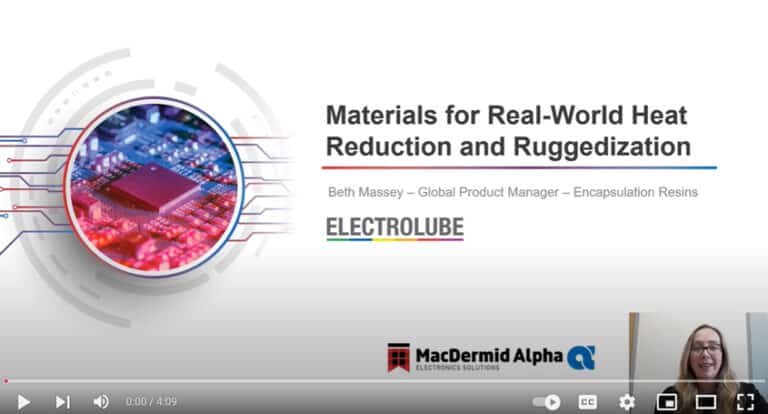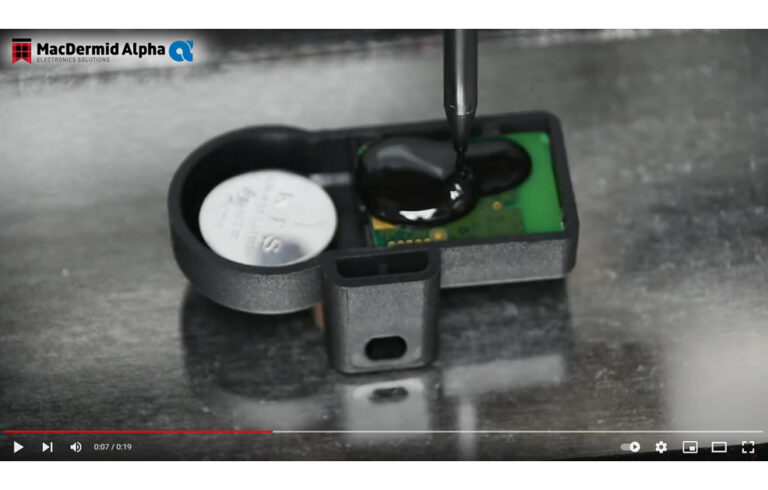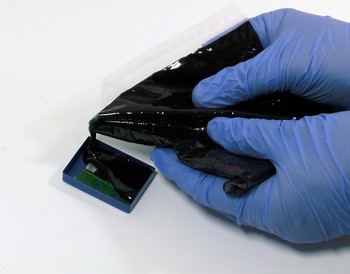Coatings fail for any number of reasons, some common and some not so common. I have more than 20 years’ experience and knowledge of the conformal coating business, and I’m still learning; but there are certain production related issues that cause problems time and time again, some of which could have been easily resolved. In my previous columns, I have examined a number of coating failure issues but this month I’m going to talk about some of the arch enemies of conformal coatings, the challenges posed by sensitive areas and higher profile parts, and I’ll also look at some of the best ways to avoid wicking to help you achieve a uniform and defect-free finish. Hopefully, it will provide useful background information to help you with your coating-related activities.
1) Why do taller/vertical pins on PCB’s represent more of a challenge to coat and can you suggest some key pointers for success?
Tall and vertical surfaces present challenges to achieving coverage with liquid conformal coatings, predominantly due to gravity, and application method to a certain degree. Traditionally liquid conformal coatings rely on solvent evaporation to increase their viscosity and prevent the material flow away from sharp corners and vertical surfaces by the combination of gravity, or capillary forces. This process is relatively slow and some degree of coverage issues are always likely to be present. UV curable materials solidify very rapidly under UV radiation of the correct wavelength and intensity, however, there is nearly always some time between the application of the material and the exposure to radiation and during this time the material will still be subject to gravitational and capillary forces, again resulting in some degree of coverage issues.
Given that selective coating with an XYZ capable robot is now the dominant application technique and these robots use a valve that is traditionally mounted perpendicular to the board, these issues are exacerbated as the coating material is also projected with momentum, perpendicular to the board, which reduces the chance of actually landing on a sharp corner or vertical surface and facilitating the gravitational and capillary flow towards the board surface. Tilting the application nozzle to a 45 degree angle increases the chance of actually hitting the vertical surfaces with material and reduces the vertical momentum and consequently the degree to which the material will flow. Modern, more viscous materials will also resist the gravitational and capillary forces when sprayed in this fashion to ensure the areas that were coated, remain coated.
2) What steps should I take to protect particularly sensitive parts to be coated?
This really depends on what the parts are sensitive to. If we are trying to protect parts from the effects of humidity, condensation or immersion in water then thickness and coverage are the most important factors to consider, along with the choice of conformal coating. Some coatings are inherently better at achieving coverage at higher thicknesses and have inherently greater barrier properties than others. Sometimes, parts are sensitive to actually being coated and either the component itself or the solder terminations can be damaged by conformal coating materials. This is especially true when the Glass Transition Temperature (Tg) of the material falls in the operating range of the board in question. As the coating material passes through its Tg, there is a delay between the decrease in elastic modulus and the increase in Coefficient of Thermal Expansion (CTE). This lag results in maximum stress being applied to the component or solder termination and can damage the component or solder. Over a sufficient number of cycles, solder can even be extruded by the coating, leading to shorts.
Therefore, the Tg of the coating material should ideally lie outside of the operating range of the PCB or at least towards the lower end of the operating range. Occasionally, taller or components can be more susceptible to damage by vibration, even though coatings can be used to help mitigate the effect of vibration, but this is a very complex, multi-faceted issue and probably a separate article in itself.
Usually a staking compound or adhesive is used to ‘glue’ the component body to the board to minimise its ability to move with vibration. However, the material has to be carefully selected to minimise CTE and needs to be sufficiently soft and elastic to dissipate vibration without being either too stiff or too elastic, to avoid exacerbating CTE issues over the operating conditions of the assembly.
3) Is coating/board failure more common on higher profile parts of the PCB and why is this?
This really depends on the design of the assembly and the conditions to which it is exposed in the field. As discussed in point 1, there are numerous challenges of actually coating taller devices effectively. Lack of coating thickness and coverage make taller components more susceptible to failures by tin whisker, arcing, corrosion, condensation or immersion. However, under conditions of high humidity, the board level terminations are often more susceptible to corrosion due to the presence of flux residues, which exacerbate the tendency for localised condensation due to their hygroscopic nature and subsequent corrosion due to their ionic nature.
4) Can you name 5 ‘enemies’ to a successful coating process?
Lack of cleanliness or the presence of contamination on the board before coating can lead to open defects in the coating due to de-wetting or non-wetting. The contaminants can affect or compromise the ability of the coating to provide long-term protection by increasing the rate of moisture uptake, interaction with water and causing corrosion beneath the coating, compromising the adhesion of the coating or a combination of all of these factors.
Variations in surface energy of the incoming bare boards will be exacerbated by the assembly process (reflow/wave thermal cycles). Surface energy of the board will determine the way that the liquid coating interacts with the substrate and the degree to which the solid coating will adhere to the board. The higher the value of incoming bare board surface energy, the more repeatable and consistent the application of the liquid coating will be and the greater degree of adhesion. The process will achieve a decent degree of Repeatability and Reproducibility (R&R), enabling a high degree of process control and consistent performance in the end use environment. Conversely, the lower the incoming surface energy, the less repeatable and consistent the process will be and the likelihood of field failures will be increased.
The actual design of the board often determines the success, or otherwise, of the coating process. Boards that are well designed for conformal coating will have good separation between areas that MUST and areas that MUST NOT be created. Taller components will be grouped together away from low profile components and low profile components will not be clustered together, close to vias or SOIC, QFP, QFN or BGA components, which will tend to pull material beneath them leading not only to potential reliability issues with these components themselves, but leaving low profile SMT discretes short of coating or with bridging bubbles.
Conformal coating is a process. Ensuring a repeatable and consistent conformal coating result depends on the way the process is designed, just as much as the material selected. Manual processes, such as spray or brushing, will inherently have more variation in the end result due to the human operator, whereas machines will consistently perform the same routine over and over. However, machines currently have no feedback loop, so should the material behaviour change, the end result will change, whereas a human operator may compensate for this (either deliberately or possibly sub-consciously). As previously discussed, surface energy of incoming boards, board design and pre-existing contamination can all affect the way the liquid material behaves. In addition, the temperature of the material will affect the viscosity of the material.
The wider the change in ambient factory temperatures throughout the day (or even using material that has been stored somewhere else e.g. outside), the greater the effect of these changes in material properties and the wider the variation in material application. Controlling the temperature of the material or compensating by machine measurements and process control equipment can be important in ensuring a repeatable machine based process. Air flow can affect the rate at which solvents evaporate and the material viscosity will build, inconsistent air flows can lead to differential flow rates and unexpected issues such as orange peel. If an oven curing process is used, the application of temperature can initially lead to a decrease in viscosity and increase the spread of the coating, before the viscosity starts to build, possibly leading to coating areas intended to be left free from coating or a higher degree of bubbling than expected. Similarly, the rate of change of temperature can lead to excessive bubbling, so controlling the ramp rate or providing a solvent ‘flash-off’ period can be necessary to ensure a uniform and defect-free finish.
5) What is wicking and how do I avoid this?
Wicking is often used interchangeably with capillary flow, especially in a conformal coating context, to describe the ability of liquids to flow into narrow gaps without the assistance of any external forces. The narrow gaps are most often unsealed connectors or the standoff between component bodies and board substrate. In the case of unsealed connectors, switches etc, the main issue is the coating ‘wicking’ up and coating the connector mating surfaces, therefore reducing the contact or potentially insulating the mating surface, preventing either the form, fit or function of the connector or switch.
In the case of low standoff devices, issues can be caused by material penetrating beneath the component package, leading to stress due to CTE mismatch (and potentially early failures) or displacing air, which can lead to the formation of open bubbles, which can be an initiation site for corrosion or other types of failure.
Typical best practice would entail using gel versions of coating materials to seal the base of connectors switches and so forth, prior to the application of the liquid coating. Masking materials can be used to achieve the same effect, although the application, curing and subsequent removal of masking materials are all wasted processes. New materials are available, which inherently minimise the extent to which the materials are affected by capillary flow, potentially eliminating the requirement for masking or sealing prior to application.
Understanding the major enemies of conformal coatings will go a long way in implementing a successful conformal coating process. I hope I have managed to heighten your awareness of some of the potential pitfalls you might face so that you can hopefully avoid any coating disasters.
Look out for my next column, where I will be exploring more conformal coating issues. In the meantime, please stay safe and well.











